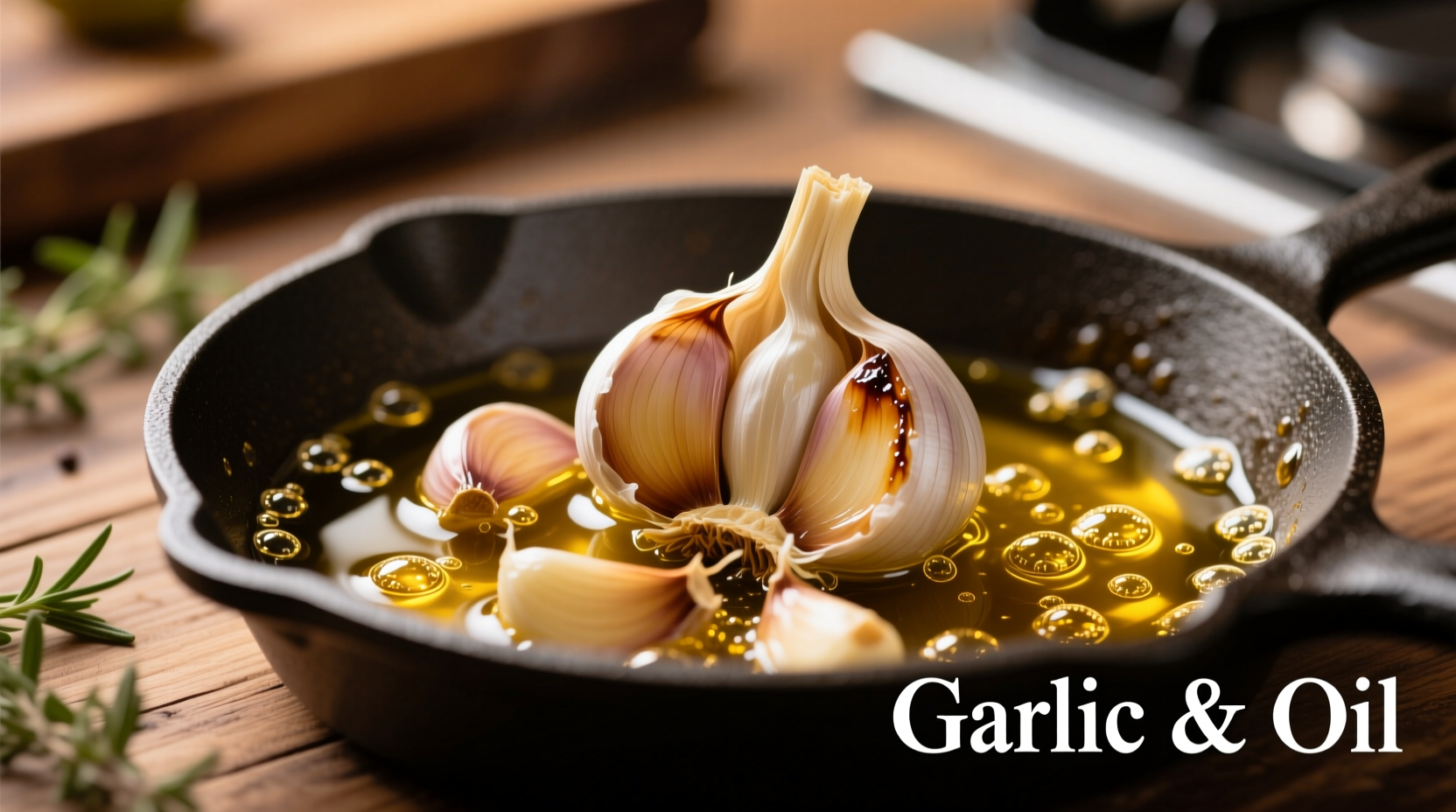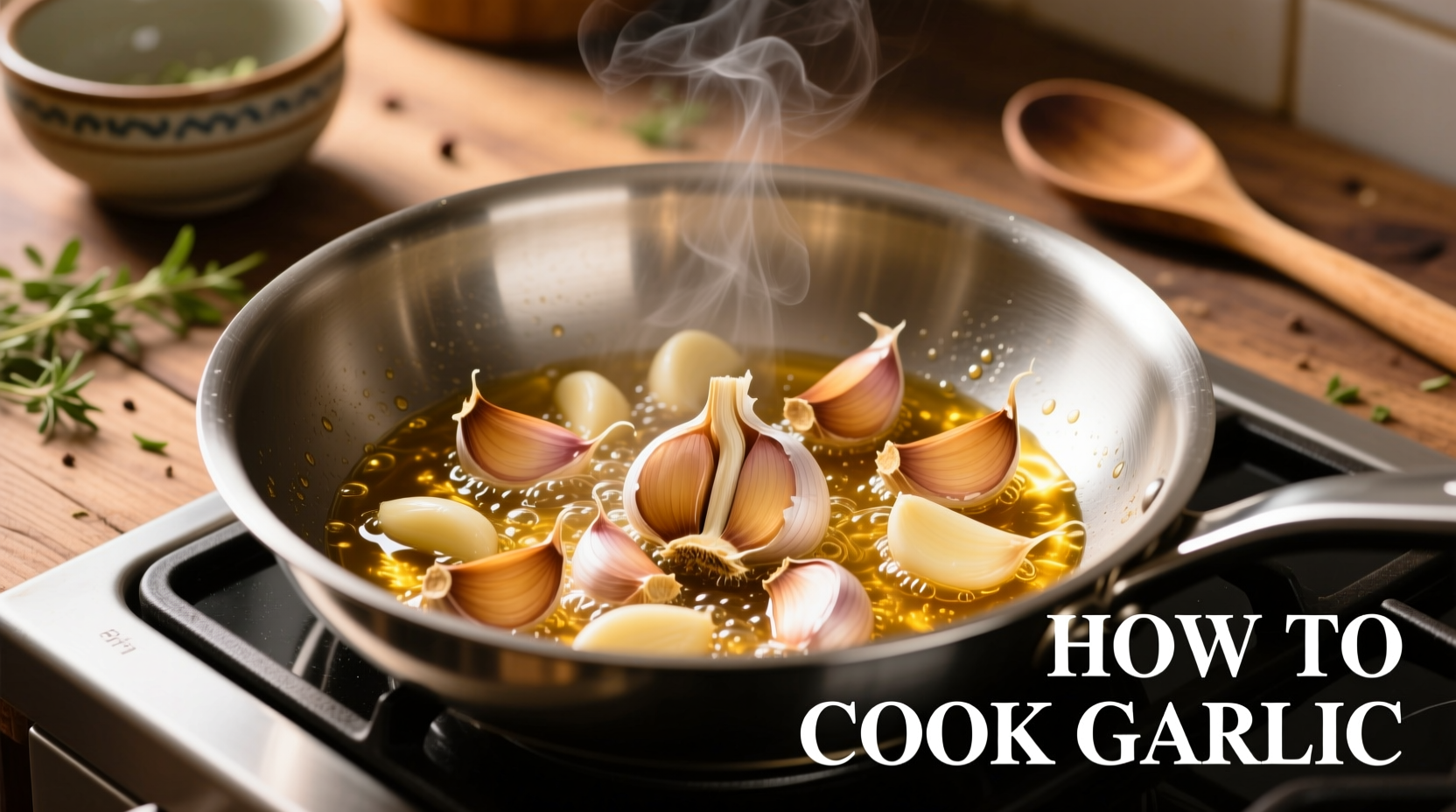Garlic transforms from pungent bulb to aromatic foundation in countless cuisines worldwide. Mastering its preparation unlocks deeper flavors while preserving valuable compounds like allicin. Whether you're a beginner or experienced cook, understanding the science behind garlic cooking prevents common mistakes that turn this kitchen staple bitter and inedible.
Essential Tools for Perfect Garlic Every Time
Before you start cooking garlic, gather these kitchen essentials:
- Sharp chef's knife (dull blades crush rather than slice)
- Wooden cutting board (prevents slipping)
- Small skillet or sauté pan (even heat distribution)
- Metal spatula (better heat conduction than silicone)
- Timer (critical for precision cooking)
| Cooking Method | Time | Heat Level | Best For | Flavor Profile |
|---|---|---|---|---|
| Sautéing | 1-2 minutes | Medium-low | Most savory dishes | Bright, aromatic |
| Roasting | 30-40 minutes | 400°F (200°C) | Spreads, dressings | Sweet, mellow |
| Infusing | 5-10 minutes | Low | Oils, broths | Subtle, background |
| Grilling | 8-12 minutes | Medium | Summer dishes | Smoky, complex |
Step-by-Step: How to Sauté Garlic Properly
Sautéing remains the most common method for cooking garlic in everyday cooking. Follow these precise steps:
- Prep your garlic: Separate cloves from bulb, remove papery skin by placing flat side of knife on clove and pressing gently. Slice or mince according to recipe requirements (finer cuts cook faster).
- Heat your oil: Warm 1-2 tablespoons of olive oil or neutral oil in skillet over medium-low heat for 1 minute. Test temperature by adding one small piece of garlic - it should sizzle gently but not immediately brown.
- Add garlic: Add prepared garlic to hot oil, stirring constantly with metal spatula.
- Monitor closely: Cook for 60-90 seconds until fragrant and just turning golden at edges. Remove from heat immediately when you detect the aroma - residual heat continues cooking.
- Combine: Add other ingredients immediately to stop cooking process.

Avoid These Common Garlic Cooking Mistakes
Professional chefs consistently avoid these pitfalls that ruin garlic's delicate flavor:
- Adding garlic to already hot oil: Always warm oil first, then add garlic. Adding to smoking oil burns garlic instantly.
- Using high heat: Garlic burns at temperatures above 375°F (190°C). Medium-low is the maximum recommended heat.
- Not stirring constantly: Garlic settles and burns quickly without constant movement.
- Cooking with other ingredients: Add garlic after onions (which take longer) but before liquids to maximize flavor extraction.
When Not to Cook Garlic: Context Boundaries
Understanding when not to cook garlic matters as much as knowing how. The University of California Davis Food Science Department notes that certain applications require raw garlic for maximum health benefits:
- Medicinal preparations: Raw garlic contains higher levels of allicin, the compound responsible for many health benefits. Cooking reduces allicin content by up to 90% according to research published in the Journal of Agricultural and Food Chemistry.
- Cold preparations: For aioli, pesto, or salad dressings, raw garlic provides the sharp bite that balances rich ingredients.
- Quick-cooking dishes: In stir-fries with very short cook times, add garlic during the last minute to prevent burning.
How to Tell When Garlic Is Perfectly Cooked
Master chefs rely on these sensory indicators rather than strict timing:
- Visual cue: Color should be pale gold, never brown. Browning indicates burning has begun.
- Aroma: The moment garlic becomes fragrant (about 60 seconds in oil) is your signal to proceed to next step.
- Texture: Properly cooked garlic should be soft but still hold its shape, not mushy or crisp.
- Sound: The sizzle should be gentle, not aggressive popping which indicates overheating.
Remember that garlic continues cooking from residual heat even after removal from burner. Always transfer to another pan or add liquid ingredients immediately when garlic reaches the desired doneness.
Storing Cooked Garlic Properly
Proper storage maintains flavor and prevents spoilage. The USDA Food Safety and Inspection Service recommends:
- Cool cooked garlic completely before storing
- Store in airtight container in refrigerator for up to 5 days
- Never store cooked garlic in oil at room temperature (risk of botulism)
- Freeze in ice cube trays with oil for longer storage (up to 3 months)
Frequently Asked Questions
What's the best oil for cooking garlic?
Olive oil works well for Mediterranean dishes but has a lower smoke point. For higher heat cooking, use avocado oil or ghee which can withstand temperatures up to 485°F (250°C) without burning. Always warm the oil first before adding garlic to prevent sticking and burning.
How can I prevent garlic from burning?
Maintain medium-low heat, stir constantly, and add garlic after other aromatics like onions. Keep a timer handy - 60-90 seconds is usually sufficient. If cooking with other ingredients, add garlic halfway through the cooking process. Having a bowl of cold water nearby lets you quickly cool the pan if garlic starts browning too fast.
Does roasted garlic lose nutritional value?
Roasting reduces allicin content (the primary beneficial compound) by about 60-70% compared to raw garlic, according to research from the Institute of Food Research. However, roasting creates new beneficial compounds like S-allyl cysteine which are more stable and better absorbed by the body. Roasted garlic remains nutritionally valuable while offering different health benefits than raw.
Can I cook garlic in the microwave?
Yes, but with limitations. Place peeled cloves in microwave-safe dish with 1 teaspoon oil, cover, and microwave on medium power for 1-2 minutes. Stir halfway through. This method works well for roasting whole cloves but doesn't provide the same flavor development as stovetop methods. The American Chemical Society notes microwave cooking preserves more allicin than traditional roasting but lacks the Maillard reaction that creates complex flavors.
Why does my garlic always burn?
Garlic burns easily because it contains sugars that caramelize quickly at high temperatures. Common causes include heat that's too high, insufficient oil, not stirring constantly, or adding garlic to oil that's already smoking hot. Start with lower heat than you think necessary, use enough oil to coat the bottom of the pan, and add garlic only when the oil is warm but not smoking.











 浙公网安备
33010002000092号
浙公网安备
33010002000092号 浙B2-20120091-4
浙B2-20120091-4